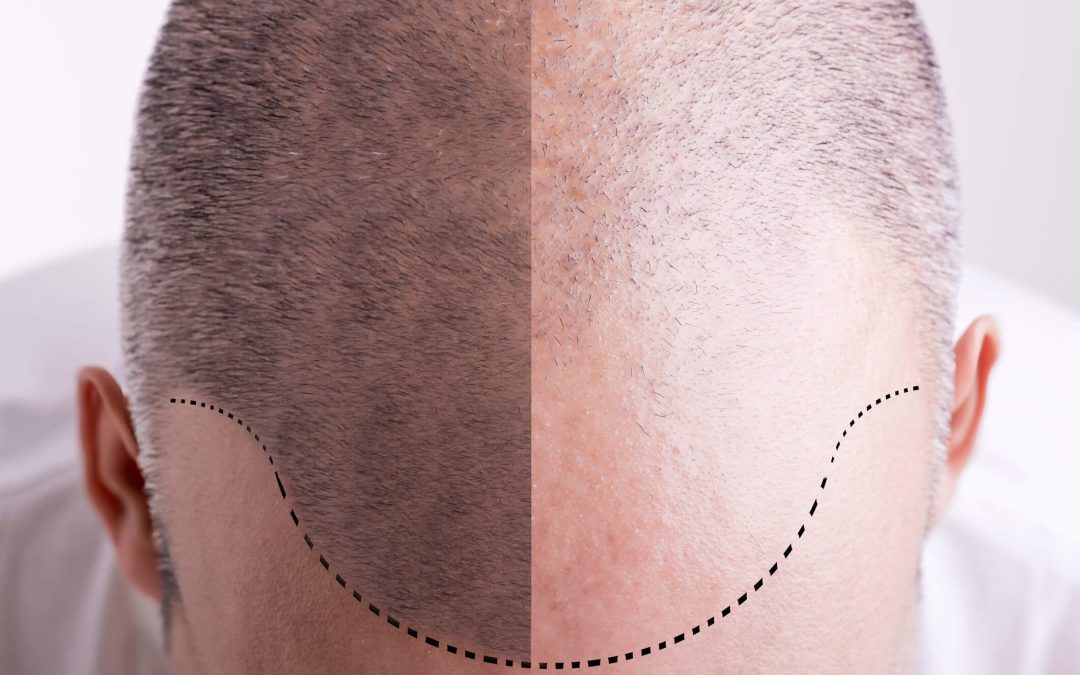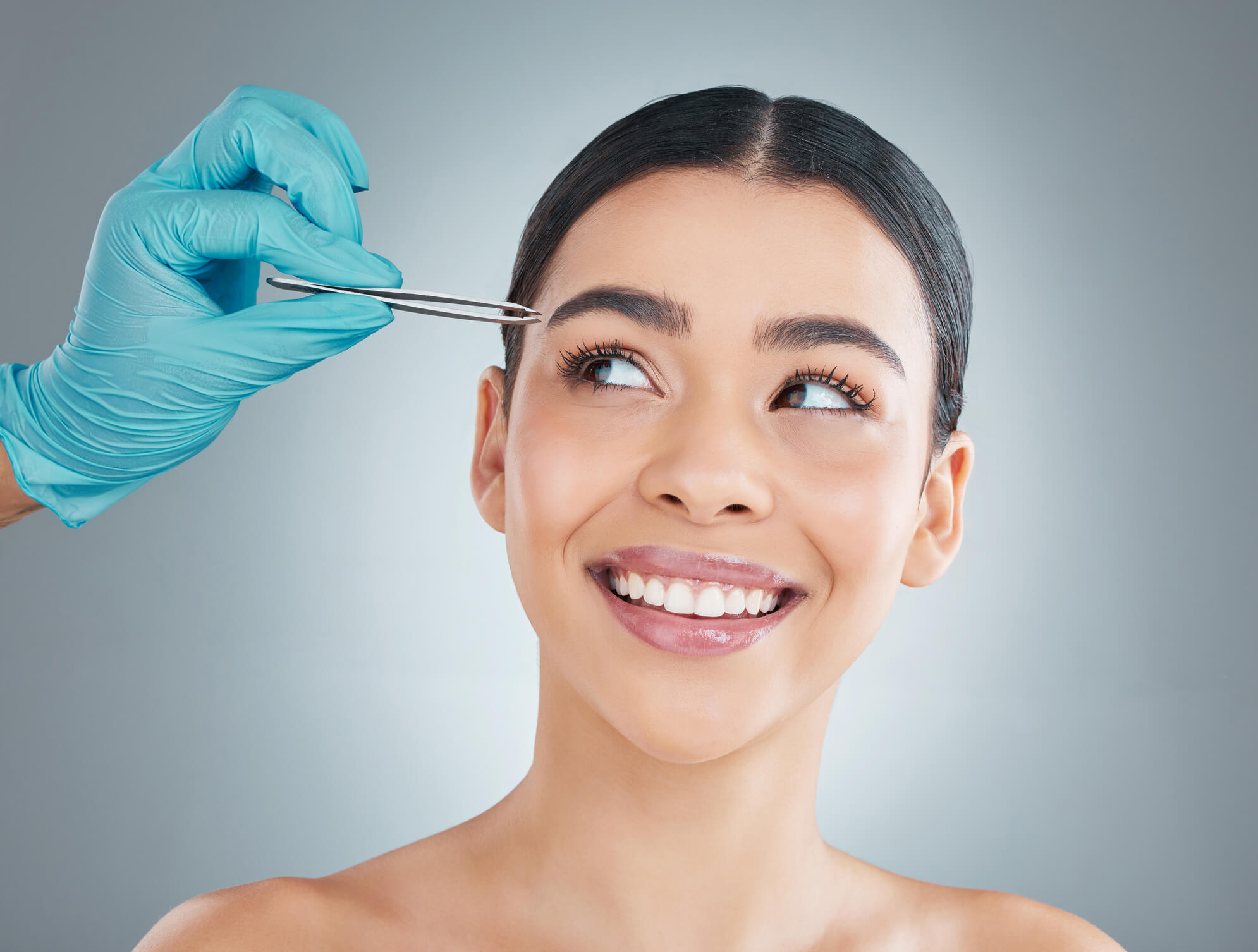It is essential to comprehend the process to establish realistic expectations, as hair transplants are a viable solution for individuals experiencing hair loss. A hair transplant timeline is available to assist patients in navigating each stage of the process, from the initial consultation to the final results, by clearly understanding what to anticipate. From pre-surgery preparation to the outcome, this timeline delineates the entire process.
Pre-Transplant Consultation
An in-depth consultation with a hair transplant specialist is the initial step. In the course of this appointment, your physician will:
- Evaluate the extent of hair loss
- Please review your medical history.
- Engage in a conversation regarding your objectives and
- Conduct a scalp analysis to ascertain whether you are a suitable candidate.
Additionally, the physician will suggest the most suitable hair transplant method for you, including Follicular Unit Extraction (FUE) or Follicular Unit Transplantation (FUT), and will provide you with an estimate of the number of follicles required.
Preparing for the Procedure
Upon scheduling the procedure, your physician will provide instructions regarding preparing your skull and body. Common suggestions consist of:
- For a minimum of one week before the procedure, refrain from consuming alcohol and smoking.
- Discontinue the use of medications that may impact blood coagulation.
- Arrange for a friend or family member to transport you home following the surgery.
- Preoperative care is indispensable for a successful outcome and a seamless recovery.
Day of the Hair Transplant
The subsequent procedures are anticipated on the day of the hair transplant:
- Anesthesia: The skull will be numbed with local anesthesia.
- Graft Harvesting: The doctor will employ the technique (FUE or FUT) to extract hair follicles from the donor area, typically the back or sides of the skull.
- Graft Placement: The harvested follicles are meticulously inserted into the balding or thinning areas. Depending on the number of grafts, this process may take several hours.
Although the procedure is protracted, most patients report it is relatively painless because of local anesthesia.
Immediate Post-Procedure Care
The immediate post-procedure period is essential for assuring the success of the surgery and promoting healthy hair growth after the hair transplant is completed. The final results can be substantially influenced by the proper care and attention provided during the first few days. Here is a comprehensive guide on how to care for your scalp in the immediate aftermath of a hair transplant procedure:
Rest
- Relax Immediately Following Surgery: It is imperative to relax for the initial 24–48 hours following your hair transplant. Although the procedure is minimally invasive and performed as an outpatient, your body requires time to recuperate.
- Refrain from Physical Activity or Stress: For the initial week, refrain from engaging in strenuous activities, heavy lifting, or any other activity that may elevate blood pressure and disrupt the healing process.
Head Elevation to Decrease Swelling
- Elevated Sleeping Position: To alleviate swelling around the forehead and eyes, sleep with your head elevated for 2–3 nights (using pillows or a recliner). This aids in the prevention of fluid accumulation and facilitates healing.
- Reduce Head Movement: Attempt to maintain a stationary head to prevent undue pressure on the transplanted areas.
Proper Scalp Care
- Avoid Touching or Rubbing the Scalp: It is crucial to avoid touching or scratching the scalp, mainly the grafted areas. The follicles are in a fragile state and are susceptible to dislodgment during the initial days.
- Gentle Hair Washing: Your physician will guide you on the appropriate time to gingerly wash your hair, typically 2–3 days after the procedure. To safeguard the new grafts, it is recommended that you use moderate, sulfate-free shampoos and refrain from scrubbing or vigorous rinsing.
Topical Treatments and Medications
- Pain Management: Your physician may prescribe anti-inflammatory medications to alleviate edema and pain relievers to alleviate discomfort.
- Antibiotics: Antibiotics may be administered to the scalp to prevent infection because of the small incisions made when the hair follicles are implanted.
- Topical Treatments: In certain instances, physicians may suggest treating the donor and recipient areas with specialized ointments or solutions to facilitate healing.
Refrain from Exposure to Direct Sunlight
- Safeguard Your Cranium: Avoid exposing your cranium to direct sunlight for at least two weeks following surgery. Heat or sunburn can irritate the epidermis and disrupt the healing process.
- Loose-Fitting Hats: To safeguard the grafts, it is recommended that you wear a loose-fitting hat when venturing outdoors. Avoid tight clothing that could exert pressure on the skull.
Smoking and alcohol consumption are prohibited.
- Refrain from smoking: Smoking can impede blood flow to the skull and constrict blood vessels, thereby delaying the healing process. It is advisable to abstain from smoking for a minimum of one week before and following the surgery.
- Refrain from consuming alcohol: Alcohol can exacerbate the risk of complications, including excessive hemorrhaging, by thinning the blood. It is recommended that you refrain from consuming alcohol for a minimum of three days following the procedure.
Monitor for Infection or Complications
Monitor for Unusual Symptoms: Although infections are uncommon, it is crucial to watch for symptoms such as persistent pain, edema, redness, or pus. Contact your physician immediately if any of these occur.
Subsequent Appointments
Post-Op Follow-Up: Your physician will arrange follow-up appointments to monitor your progress and guarantee that the grafts recuperate appropriately. Conducting these examinations to identify potential issues and promptly resolve them is crucial.
First Week Recovery
The initial days following the surgery are essential for establishing a solid foundation for successful hair growth and recovery. Patients may anticipate the following:
- Mild swelling and discomfort in the donor and recipient regions.
- Scabs are forming around the hair follicles that have recently been transplanted.
- Redness and potential itching may occur as the scalp begins to recover.
You must adhere to the aftercare instructions with meticulousness:
- For the initial 2–3 days, refrain from washing your hair.
- To alleviate edema, it is recommended that you sleep with your head elevated.
- Refrain from engaging in physical activities that may cause scalp strain.
Hair Growth Expectations at 1 Month
You are still in the early phases of recovery at the one-month mark following a hair transplant, and there will be minimal visible hair growth. What you can anticipate is as follows:
Transplanted Hair Loss (“Shock Loss”)
Shedding of the transplanted hair follicles may occur between two and four weeks following the transplant. This is typical of the “shock loss” procedure, in which the newly implanted hairs fall out.
Despite the potential for alarm, this is wholly predictable and indicates that the follicles are transitioning into a resting phase before new, healthy hair growth.
Scalp Healing
The initial scabbing and redness will have primarily recovered by this time, resulting in a clean scalp.
Certain patients may still observe mild pinkness or minor sensitivity in the recipient and donor areas; however, this typically resolves within the next few weeks.
Absence of any discernible new growth
It is anticipated that there will be no substantial hair growth at the one-month mark. The follicles are adjusting to their new locations and are currently dormant. The next few months will increase the visibility of new hair growth, typically within 3–4 months.
Hair Texture and Appearance
Visible hair may appear sparse, exemplary, or thin. These hairs do not indicate the outcome; they will develop thickness and maturity over time.
Subsequent Care
Adhere to the postoperative care instructions provided by your physician. During this phase, it is essential to continue using mild shampoos and refrain from direct sun exposure or any activity that could potentially harm the newly transplanted follicles.
Patience Is Essential
It is possible to become impatient or anxious about results in one month; however, it is essential to remember that complete hair growth requires time. The most significant results will be observed approximately 6–9 months after the surgery, with the final results becoming apparent after 12–18 months.
Hair Growth Progress at 3 Months
You are transitioning from the healing phase to the initial stages of new hair growth three months following your hair transplant. During this time, the following is what you can anticipate:
The commencement of initial hair growth
New hair may begin to grow approximately three months after the transplant, but it may remain exceedingly fine and sparse. This period of hair growth is frequently referred to as “baby hair” and may not be fully visible.
This is typical and will improve as additional hair follicles become active; however, the new hair will initially appear sporadic and irregular.
Hair Texture and Appearance
The new hair may appear softer, finer, and lighter than natural hair. It will progressively thicken and darken as it grows, becoming more consistent with the rest of your hair over the next few months.
Some new hairs may develop in a different direction; however, this phenomenon typically resolves itself as the hair matures.
Persistent Shedding
Although most of the shedding (shock loss) occurs within the first month, you may still observe some shedding of extant hair during this phase. This is a regular aspect of the hair’s growth cycle and should not cause concern.
Healing of the Donor and Recipient Areas
The donor area (where the hair was extracted) and the recipient area (where the hair was implanted) should have primarily recovered by this point, with only a small amount of redness or sensitivity remaining, if any.
The scalp texture in both regions will appear more natural, and any scabs or crusts that resulted from the procedure should be eliminated.
Reality vs. Expectations
It is crucial to regulate your expectations during the three months. Numerous patients may experience anxiety when they have not observed significant hair growth; however, this is entirely typical. The preponderance of visible growth will occur between 6 and 9 months following the transplant.
Be diligent! The rate of hair growth is not consistent across all individuals, and some may observe more noticeable progress than others during this period.
Treatments for Hair Growth
Continuing with hair growth treatments such as Minoxidil or PRP therapy, as your physician recommends, facilitates the growth process and expedites the appearance of results. Consistently adhere to your physician’s recommendations regarding these treatments.
No Requirement for Additional Surgery
You are not required to contemplate any additional surgical interventions at this time. It is crucial to wait until the 12-18 month mark before determining whether additional sessions are necessary for density or coverage, as hair transplant results take time to manifest fully.
Proceed with gentle hair care.
Continue to adhere to your hair care regimen, which includes using mild shampoos and avoiding harsh chemicals or heat styling, which can stress the scalp and newly growing hair.
Hair Growth Milestones at 6 Months
You will begin to observe more substantial changes in the growth and appearance of your hair at the six-month mark following a hair transplant. This period is thrilling as numerous preliminary findings are beginning to manifest. Progress and development milestones at this stage are as follows:
Visible Hair Growth
By the six-month mark, 50-60% of the hair growth that was transplanted should be visible. The new hairs will be significantly denser and thicker than in previous months.
Growth will remain irregular in certain regions. However, coverage should improve.
Hair Thickening
At six months, hair thickness experiences a substantial increase. The delicate “baby hair” you observed at three months of age should now be denser and more akin to your natural hair texture.
Hair filaments will continue strengthening and integrating more seamlessly with your current hair.
Enhanced Density
You will observe a substantial increase in hair density. Areas that were sparse a few months ago will begin to fill in as more hair follicles become active and begin producing hair, even though this is not the outcome.
Depending on the number of transplants received, the density may continue to increase over the next few months.
Growth Rate and Hair Length
Hair grows at approximately half an inch (1.25 cm) per month. Consequently, the transplanted hair will likely be approximately three inches (7.5 cm) long by the six-month mark.
Refraining from aggressive styling or chemical treatments that could stress the scalp is still advisable, but you may begin trimming your hair.
A More Positive Appearance
The new hair should appear broader and healthier as it matures. The transplanted hair should be similar to your natural hair in terms of color and texture by this point, although some finer hair may still be present.
The hairline should appear natural, with no scalp redness, puffiness, or sensitivity.
Alternatives for Hair Styling
Your hair can be styled more readily in six months. It is sufficiently long to be cut, combed, or styled seamlessly with the rest of your hair. Nevertheless, to safeguard the newly transplanted hair, avoid harsh chemical treatments or extensive heat styling.
Persistent Development
Although you will observe substantial advancements in six months, it is crucial to remember that there are better outcomes than this. The total hair growth and maturation results typically manifest between 12 and 18 months.
The hair will grow longer and denser, filling in any remaining sparse or patchy areas.
Continuous Treatments
It is recommended that you continue to use treatments such as finasteride or minoxidil to promote hair growth and preserve the health of both transplanted and non-transplanted hair. These interventions have the potential to avert future hair loss in untreated areas.
Schedule a follow-up appointment with your surgeon.
Subsequent appointments with your hair transplant specialist to assess your progress by this point are probable. If you have any concerns about density or growth, your physician can recommend additional treatments or touch-up procedures.
Patience for the Final Results
Although the six-month milestone is substantial, the complete transformation is still in progress. Be patient, as the complete development of hair may require 12–18 months. The final thickness, texture, and density of the transplanted hair will be visible at this point.
Final Results Timeline (12 Months)
The 12-month mark following a hair transplant is a significant milestone, as it is the point at which most patients will observe the ultimate results of their procedure. The transplanted hair will have fully grown by this time, and you will clearly understand the overall success. At the twelve-month mark, the following is what to anticipate:
Complete Hair Growth
By the 12-month mark, 90-100% of the hair that was transplanted should have grown in. The hair will be matured entirely, with a texture, thickness, and density consistent with your natural hair.
You will observe that the transplanted areas, which may have appeared scattered earlier in the process, have now filled in and provide uniform coverage.
Hair that is both thicker and more robust
The hair transplanted during the procedure will now appear denser and more robust. Any fine or soft hair growing earlier will have thickened into typical, healthy hair strands.
This is where your hair will appear and feel the most natural, integrating seamlessly with the rest of your hair.
A Natural-Looking Hairline
One of the most significant advantages of a hair transplant is establishing a natural hairline. The hairline created during the procedure will be prominent and should appear entirely natural in both the front and crown areas by 12 months.
The hairline’s placement, density, and angles will reflect the aesthetic objectives established during the planning phase.
Flexibility in Style
Your transplanted hair can now be treated in the same manner as your natural hair, as it has reached complete growth. You can trim, style, color, or treat your hair. The hair is permanent and will continue growing, providing complete styling flexibility.
Many patients experience increased self-assurance during this phase and frequently opt to alter their appearance or experiment with various hairstyles.
Continuous Hair Care
Maintaining a healthy hair care routine is imperative to ensure the good health of your natural and transplanted hair, even though the results are permanent.
To ensure the continued health of your hair, it is essential to use gentle hair care products, shield it from heat or chemicals, and maintain a balanced diet.
Hair Loss in the Future
It is crucial to remember that, as the transplanted hair is permanent, non-transplanted hair may still be susceptible to hair loss over time. This may necessitate additional treatments or procedures in the future, particularly in untreated cranium regions.
Your physician may prescribe ongoing hair loss prevention treatments such as Finasteride or Minoxidil to protect your natural hair and prevent future thinning.
Final Density
By the 12-month mark, the density of your hair should have been thoroughly established. However, while some patients may be content with the density they have obtained, those with more advanced hair loss may desire additional procedures to increase density further. If required, your surgeon can provide information regarding secondary procedures or touch-ups.
Long-Term Upkeep
The emphasis transfers from achieving results to their maintenance after 12 months. Your hair transplant specialist can help ensure that your scalp remains healthy and that any future hair loss is managed effectively by conducting regular follow-ups.
Numerous patients continue implementing supportive treatments, including scalp massages or platelet-rich plasma (PRP) therapy, to preserve their hair’s health and growth.
Complete Confidence
The visible transformation from the transplant is complete, and most patients report a significant improvement in self-esteem and confidence over the 12 months.
The results are often life-changing and natural, providing patients with a renewed sense of self-assurance in their appearance.
Future Procedures in Consideration
Certain patients, particularly those with extensive hair loss, may consider a second hair transplant for additional density or coverage. If necessary, your physician may deliberate on this decision. Most patients are content with their outcomes after twelve months and do not do additional surgery.
Long-Term Care and Maintenance
Achieving successful, natural-looking results from a hair transplant does not conclude with the procedure itself. Long-term care and maintenance are essential for preserving the health of your transplanted hair and promoting ongoing growth. The best possible outcome is guaranteed by the proper maintenance of the transplanted hair, which is permanent. A comprehensive guide to the maintenance of hair transplants over an extended period is provided below:
Routine for Daily Hair Care
- Delicate Shampooing: Following the initial healing phase, establish a hair care regimen incorporating consistent, delicate shampooing. Employ mild, sulfate-free shampoos to prevent the depletion of essential lipids from your hair and scalp. Maintaining a spotless scalp minimizes the likelihood of infections and fosters a healthy environment for hair growth.
- Conditioning: Consistent conditioning is essential for preserving manageability and tenderness, particularly during the growth phase of new hair. Apply a lightweight conditioner to prevent buildup on the scalp.
Safeguard Your Scalp
- Prevent Prolonged sun Exposure: Safeguarding your scalp from UV injury is crucial even after it fully recovers. When exposed to the sun for an extended period, it is recommended that you apply sunscreen to your skull or wear a hat. Hair growth can be impeded by prolonged exposure to ultraviolet radiation, which can cause injury to the scalp and hair.
- Avoid Tight Hairstyles: Avoid pulling your hair too tightly in buns, dreadlocks, or ponytails. Traction alopecia is when the hair is dragged out of the follicle, resulting in thinning or loss due to excessive tension on the hair.
Adequate Hydration and a Healthy Diet
- Eat a Well-Balanced Diet: Nutrition significantly influences hair health. Biotin, zinc, iron, and protein are vitamins and minerals that contribute to hair vitality and growth. Eggs, nuts, leafy greens, and fish are excellent for your diet.
- Maintain Hydration: Proper hydration of the epidermis is crucial for healthy hair growth. Consuming an abundance of water can achieve this. Brittle hair and a thirsty scalp may be the consequences of dehydration.
Scalp massages
Regular Scalp Stimulation: Massaging the scalp increases blood flow to the hair follicles, promoting growth. To prevent the transplanted hair from being disturbed, apply mild pressure. You may employ your fingertips or a scalp massage instrument for a few minutes daily.
Finasteride and Minoxidil
- Please consider the ongoing treatments: Your physician may suggest that you utilize hair growth treatments such as Finasteride (Propecia) or Minoxidil (Rogaine) to maintain the health of your hair following the transplant. These treatments can impede or prevent further hair loss in the areas that have not yet been transplanted and promote the growth of newly transplanted hair.
- Minoxidil: Minoxidil is a topical treatment administered to the scalp to promote hair growth.
- Finasteride: An oral medication that diminishes the hormone that induces hair thinning.
Platelet-Rich Plasma (PRP) Therapy
PRP Therapy: Specific individuals elect to undergo PRP therapy after their transplant to stimulate hair growth and preserve hair health. Platelet-rich plasma (PRP) is a procedure that entails the extraction of a small quantity of blood, its subsequent processing to concentrate the platelets and its subsequent injection into the skull. The transplanted follicles can be stimulated, and the growth factors can improve hair density in PRP.
Stress Management
Reduce Stress: Hormonal imbalances that induce discharge can impact hair growth by triggering chronic stress. Implement stress management strategies such as mindfulness, meditation, or consistent exercise to safeguard your hair from stress-induced loss and maintain overall well-being.
Schedule a Follow-Up Appointment with your Physician
Regular Health Checks: Maintaining contact with your hair transplant specialist is crucial even after a successful transplant. Your physician can evaluate the condition of your scalp and hair and promptly address any issues through routine check-ups. Your doctor may suggest supplementary remedies or modifications to your hair care regimen contingent upon your condition and hair loss patterns.
Refrain from smoking
Quit Smoking Permanently: Smoking can impede hair growth and overall follicle health by constricting blood vessels and reducing blood flow to the skull. The results of a hair transplant may be compromised, and the hair may diminish over time if the individual continues to smoke.
Future Hair Loss Consideration
Plan for Future Hair Loss: Although the transplanted hair is permanent, it is crucial to remember that other regions of your skull may continue to experience hair thinning or loss. In consultation with your physician, a long-term strategy for managing hair loss, which may involve ongoing treatments or additional procedures, should be developed.
Conclusion
The timeline for men undergoing hair transplant surgery may appear lengthy, but each person must maintain a patient attitude throughout the procedure. Understanding the various phases, including signs and side effects, will help you regulate your expectations as you move toward restoring your hair. From the initial consultation to addressing baldness or pattern baldness, every part of the process plays a role in reaching your hair restoration goals. In addition, many factors, such as the surgeon’s place and expertise, can influence the final results, bringing you closer to a fuller head of hair, even if you need to consider dono hair options.
Frequently Asked Questions
What is the duration of a hair transplant procedure?
Depending on the number of grafts being transplanted and the method employed (FUE or FUT), a typical hair transplant procedure can last 4 to 8 hours. Extensive sessions may require additional time or be divided into multiple days.
When will I be able to observe the consequences of my hair transplant?
Hair transplant outcomes reveal themselves progressively. Initial growth will commence within three to four months, followed by substantial growth within six to nine months. The final results, which include entirely matured hair, typically manifest within 12–18 months.
Is it typical for hair to lose hair following a transplant?
Indeed, the hair transplant process involves loss. “Shock loss” refers to the potential for the transplanted hair to be lost approximately 2–6 weeks following the surgery. This is to be anticipated and facilitates the growth of new, more robust hair.
What is the recommended duration of recovery following the procedure?
Most patients can resume non-strenuous activities within 1–2 days of the procedure. Nevertheless, to facilitate the healing process, it is advisable to refrain from engaging in strenuous physical activity and exercise for a minimum of 1–2 weeks.
What is the appropriate time to cleanse my hair after a hair transplant?
Generally, it is possible to begin gingerly washing your hair with a mild shampoo 2–3 days after the procedure. During the initial recuperation period, please exercise caution and refrain from using high-pressure water and scrubbing my scalp.
What is the duration of edema following a hair transplant?
After the procedure, swelling typically reaches its maximum within 2–3 days and gradually diminishes over 5–7 days. Swelling can be mitigated by elevating one’s cranium while sleeping and refraining from strenuous activities.
What is the appropriate time to recommence routine activities, such as sports or exercise?
After approximately one week, light activities can be resumed. Nevertheless, it is advisable to refrain from strenuous physical activities, weightlifting, or athletics for at least two weeks to prevent the transplanted grafts from being damaged.
Will I be required to take any medication following the procedure?
Your physician may prescribe antibiotics and anti-inflammatory medications to prevent infection and alleviate edema. Medications such as Finasteride or Minoxidil may be prescribed to promote hair growth and prevent additional hair loss.
What is the duration of the rehabilitation process?
The initial healing process typically lasts between one and two weeks. Mild discomfort, erythema, or scabbing may be experienced during this period. It typically takes several months for the scalp to recover fully, and new hair growth typically commences around three months.
Are the results of a hair transplant permanent?
Indeed, the outcomes are typically irrevocable. Hair follicles that are transplanted are typically obtained from areas resistant to hair loss, such as the back and sides of the head. This resistance is maintained even after the transplant.
Comprehending the Hair Transplant Timeline: What to Anticipate at Each Neograft Hair Restoration Orange County Stage!
Are you interested in hair restoration and the results that can be anticipated following a hair transplant? At Neograft Hair Restoration Orange County, we acknowledge that the process can be thrilling and intimidating. Our team of hair restoration specialists and surgeons is available to guide you on the hair growth timeline, from the instant you depart our clinic to the complete results you can anticipate within the first year.
For further information, please refer to our previous blog posts: “Can Hair Dye Cause Hair Loss?” and “Does Wearing a Hat Cause Hair Loss?“
A complete, healthy head of hair can help you regain your appearance and increase your self-esteem. Please contact us immediately to schedule your consultation and begin gaining confidence.















Recent Comments